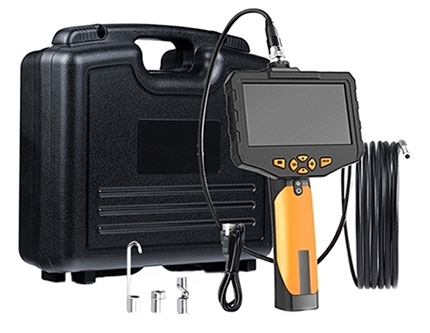How to Use Industrial Endoscope?
Industrial endoscope is a kind of visual inspection in NDT (nondestructive testing). The biggest difference between endoscopy for industrial use and other nondestructive testing methods is that it can directly reflect the internal and external surface of the tested object without disassembling the tested body.
When talking about the operation of industrial endoscopes, we have always thought that it is not difficult: just insert the probe into the inspected area, adjust the brightness, do the clarity, find the best viewing angle, and then inspect in real-time monitoring, take pictures or video. In this article, ATO industrial automatin will tell you how to use industrial borescope.

Of course, the use of industrial endoscope is very easy. However, if we pay attention to some tricks, the borescope can be best protected and its life can be extended very well. The final result is saving money. There are three notes that tell you to use industrial endoscope:
- Always remember that it is very important to have the probe status "straight" before removing the insertion tube from the examination area. If the probe gets stuck, the possible results are: damage to the bent part, damage to the camera module, broken internal wires, damage to the entire insertion tube, etc. It is not easy to repair these parts.
- Move the probe to the area to be inspected, find the target area first, and then perform joint actions. This reduces wear and damage during use. In addition, it is more convenient to take full advantage of the depth of field when the detection camera is in the target area or close to the detected object. As we all know, the image can be clear only if the detected area/ object distance is within the DOF (depth of field) range of the endoscope camera.
- Try not to dent or fray your insertion tube of 4.3" LCD industrial endoscope. You will understand this better if you know some basic structure of the insertion tube. The outer recess of the insertion tube can cause failure or damage to all internal wires. Sure, the insertion tube can take some pressure, but it's not rough and strong enough to withstand dense, small areas of pressure.

